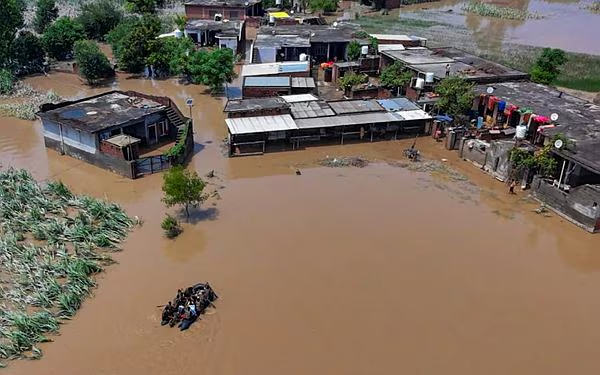Heavy rains have caused severe flooding across nine districts of Punjab, including Pathankot, Batala, Gurdaspur, Ferozepur, Fazilka, Kapurthala, Amritsar, Tarn Taran and Hoshiarpur. The situation has forced large-scale rescue and relief operations involving the Indian Air Force (IAF), Army, BSF and state authorities.
According to officials, IAF helicopters have rescued 46 stranded civilians and dropped over 750 kilograms of essential supplies, including food and medicines, in flood-hit areas. In Dera Baba Nanak, which was among the worst affected, 38 Army personnel and 10 BSF jawans were winched to safety in a high-risk operation. Drones are also being used to deliver food packets in villages that are completely cut off due to waterlogging.
Punjab DGP Arpit Shukla confirmed that police teams and SSPs are closely monitoring operations and seven special control rooms have been set up across the state. He said helicopters and drones are playing a key role in reaching people trapped in inundated areas. The Ministry of Defence also said that relief missions by IAF and Western Air Command are continuing both in Punjab and nearby Jammu regions.
To ensure quick action, Chief Minister Bhagwant Singh Mann has deployed the entire state cabinet to flood-hit areas. Ministers have been instructed to remain stationed on the ground until the crisis is fully under control. They have been tasked with overseeing evacuations, ensuring supply of food and medicines, and arranging temporary shelters.
Finance Minister Harpal Singh Cheema, after reviewing the situation with district officials of Sangrur and Mansa, said that saving lives and protecting homes is the government’s top priority. Other ministers have been given charge of specific districts, such as Harbhajan Singh ETO, who is supervising relief efforts in Ramdas, Tarn Taran, Sri Goindwal Sahib and Ajnala.
The Punjab government has also confirmed that all departments are working in coordination to prevent delays in relief work. Officials said the focus right now is on shifting people to safety, ensuring food and water supply, and preventing the spread of diseases in temporary shelters. With more rain expected, authorities are preparing for continuous operations over the coming days.



